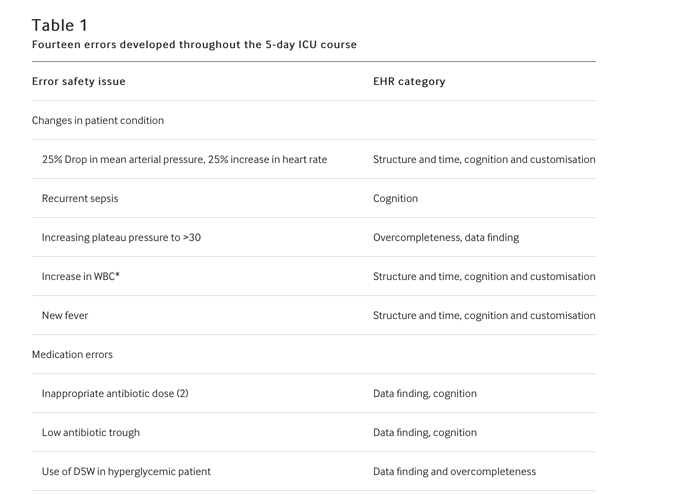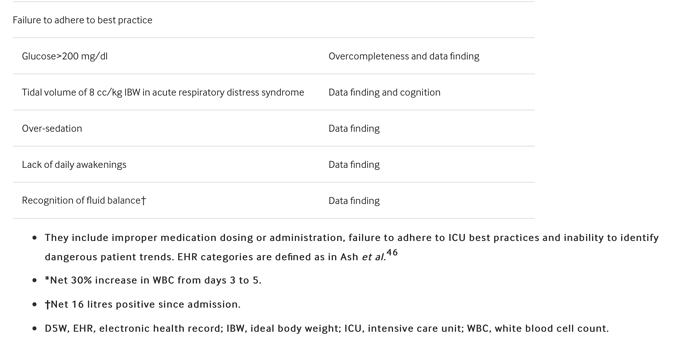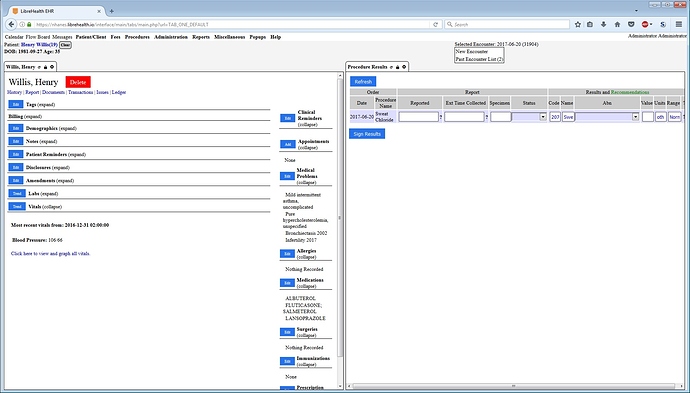The following PDF has 11 tasks or exercises health informatics students and others might perform. I don’t have things fleshed out yet but wanted to see what you thought of the tasks LibreHealth Educational EHR Exercises for Health Informatics students.pdf (31.7 KB)
I spent today looking through literature review
Here are high level summary notes that came up with …With a detailed review of abstracts attached in the pdf
2 closely related articles
-
Enriching data with GIS datasets
-
Enrich with billing data
-
Simulation case studies for the EHR Education project
- Medication reconciliation
- Terminology and standards
- Clinical decision support
- Usability design
- CPOE
- Interoperability and messaging - HL7
- Billing and medical coding
- IOT and connected home and Apps
- Maybe consider use in a MOOC
- Social media
-
Expand domain - medical students , pharmacists etc
OHSU had 14 errors introduced into a teaching EHR
Lit Review.pdf (1.1 MB)
This look great
Better if the EHR team can come up with documentation to help this
Great job.  I look forward to reading both articles and working on some tasks for clinical and HI students this week.
I look forward to reading both articles and working on some tasks for clinical and HI students this week.
When you say OHSU had 14 errors introduced into a teaching EHR I assume you mean they did this on purpose and wanted students to detect the errors?
The NHANES data is not perfect but that is real world. I can see medical students reviewing e.g. diabetic patients to see which of the many annual ADA guidelines were adhered to and which were not. Which medications were appropriate and which were not.
To @sunbiz do we have any progress on grant application?
Here is another data set from the CDC that might provide some additional scenarios for various purposes.
National Ambulatory Medical Care Survey (NAMCS) National Hospital Ambulatory Medical Care Survey (NHAMCS)
I did find an excellent reference “100 Cases in Clinical Medicine” I can use to create case studies. Unfortunately, it is copyrighted so can only use it as a guide and not cut and paste which would have saved time
Added a new case of acute pericarditis Dennis Kelley. I have not been able to use the SOAP function and can’t find the capability of creating templates. Used dictation option instead. Does anyone know if this is a limitation of the demo?
There aren’t/shouldn’t be “limitations” with the demo. Bugs are a different story.
There was a bug introduced in the SOAP form that is deployed on the server at present which is why the SOAP form isn’t working
I tracked the problem down to a misplaced > and will see about getting a proper fix into the code base. It needs to go after the smarty tag to be part of the HTML instead of being part of the PHP (which causes a syntax error…)
Therein lies the problem with PHP – that should not happen…
The problem lies not within PHP…It lies within the SMARTY template system, which is not really PHP or HTML, and uses its own sort of tag system…and it is going away very fast (gone with the next commit from Nilesh), along with the archaic SOAP template that both narrative-focused and empirical focused documenters often detest.
Thanks for the detective work. I could also not get the immunization section to enter a new immunization on the test patients I am creating
Are code lists installed (ICD10, immunizations, at least) on the demo?
I can search for the CVX immunization codes and find what I want but the information is not inserted into the chart.
I also tried to enter a lab test on Henry Willis who has cystic fibrosis and can’t see a way to enter outside lab results
There is a bug in the immunizations form as well. There is a JavaScript error: “Calendar is not defined” I suspect it was introduced with this commit:
That failed JavaScript makes it so that the save button doesn’t work. Will try to investigate more later today.
Entering lab results requires multiple steps, and single values cannot be added in an “ad hoc” manner as far as I know. Taking a look at “Procedures>Configuration” you can see the “lab panel” I defined for the NHANES values.
To create additional test, they first need to be defined there.
Then for each patient, a “procedure order” can be created from the administrative menu on the encounter page.
After that, the values can be entered under “Procedures>Pending Review”
submitted a PR to fix it.
Thanks. I was able to create an order for a sweat chloride, save it and transmit it. When I go to procedures >> pending review I don’t see anything. Do I need to sign it or am I missing an obvious step?
The “procedure configuration” wasn’t setup quite right. There needs to be both an “order” and a “result” component defined. I made some changes now.
I’m still a little confused. I now see the sweat chloride test but no logical place to enter the results of 62 mmol/L and there are no defaults of mmol/L which is pretty common for lab tests.
We need to work out the bugs in all of these functions before universities join the effort
As we look for grants we should keep in mind that using the platform to build FHIR apps would be very legitimate. The SMART APP Gallery continues to grow. On just this one page there are apps for HF and diabetes predictive analytics. I’ll need to look into how they did this but could be very pertinent to what we would like to do ultimately. The diabetes predictor is pertinent because it deals with outpatients and uses 3 algorithms described a little further here.
Not sure which screens you are looking at, but bringing up “Henry W” then selecting Pending Review brings up the screen where the sweat chloride value/result can be manually entered. (see screenshot). The list of “unit options” is definitely lacking.
Part of the problem is that manual lab result entry isn’t an area of the software that has been well refined. It’s secondary to the HL7 lab exchange mechanisms, and even there I’m of the opinion that it is a less than ideal interface.


